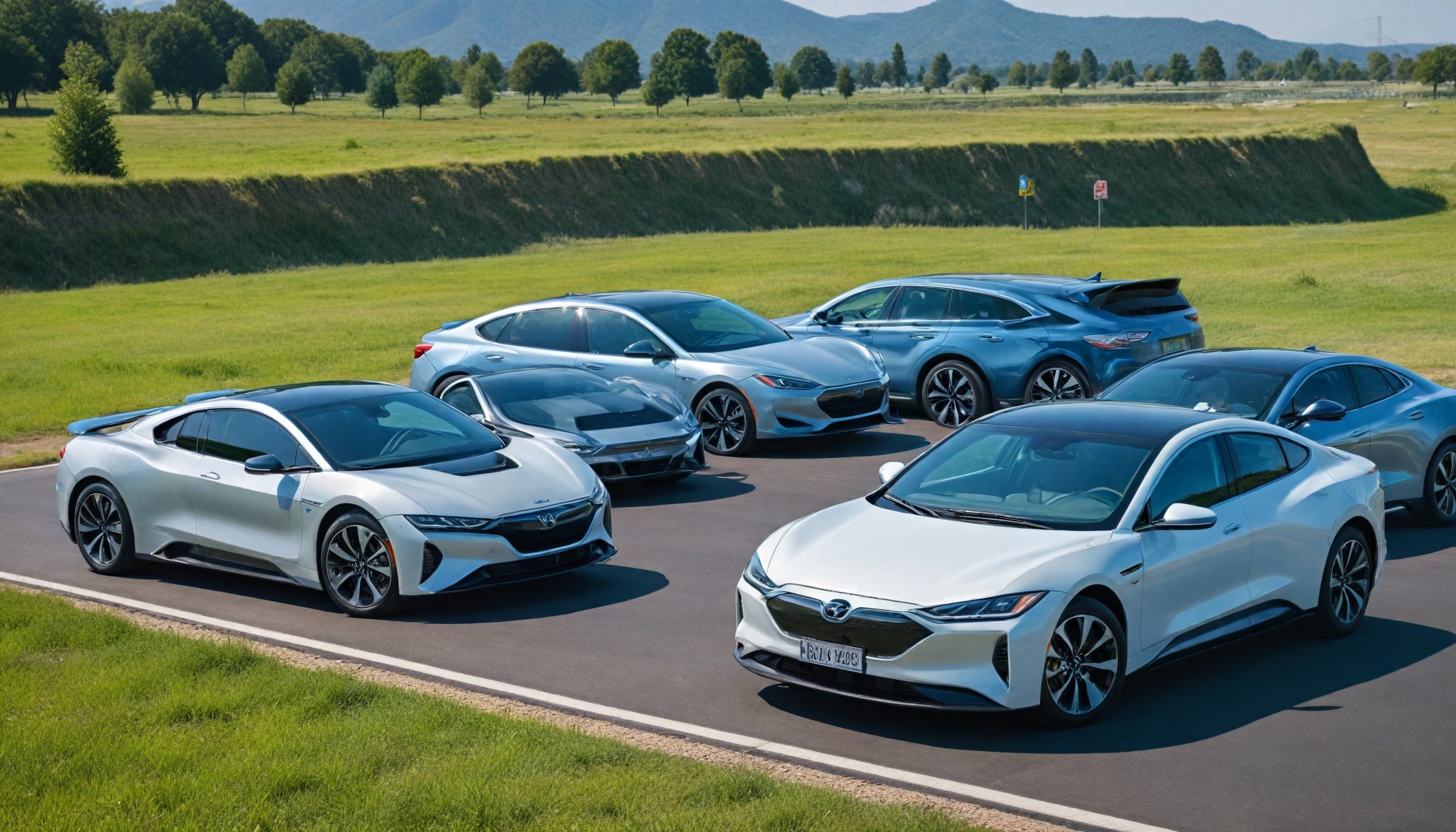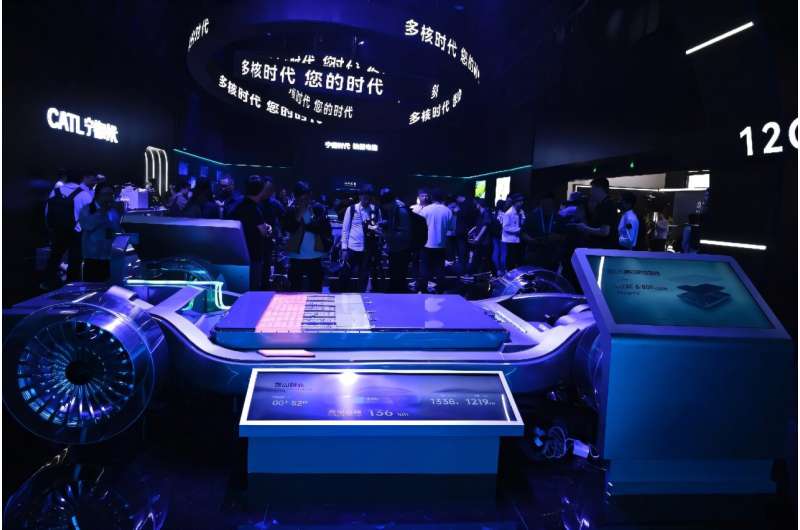
GaN transistors revolutionize EV charging with 3x faster speeds, smaller footprints, and 70% energy savings, accelerating electric vehicle adoption through superior efficiency.

Drivetech Partners
The electric vehicle charging landscape is transforming through the adoption of 650-V Gallium Nitride (GaN) Field Effect Transistors, which deliver dramatic improvements in charging speed, efficiency, and system size. These semiconductor innovations enable revolutionary power electronics architectures that are reshaping both onboard vehicle charging systems and infrastructure charging stations, with key benefits including higher switching frequencies, smaller footprints, and superior thermal management compared to traditional silicon technologies.
Key Takeaways
GaN FETs enable three times faster charging while reducing size and weight compared to silicon-based alternatives
Advanced topologies like totem-pole PFC deliver up to 70% energy savings and can reduce battery costs by approximately $500 per vehicle
Smaller die sizes and superior thermal properties allow for dramatically reduced cooling requirements in space-constrained EV applications
Bidirectional charging capabilities powered by GaN technology support vehicle-to-grid integration without efficiency compromises
Industry forecasts suggest GaN technology could accelerate EV adoption by up to three years through improved charging infrastructure
Game-Changing Advantages of 650-V GaN FETs
The emergence of 650-V Gallium Nitride Field Effect Transistors represents a significant leap forward in power electronics for electric vehicle charging systems. These components deliver substantially higher switching frequencies than traditional silicon MOSFETs or even Silicon Carbide (SiC) alternatives, translating to smaller transformers and passive components throughout the charging system.
Latest-generation devices, such as Renesas' Gen IV Plus GaN FETs, feature a 14% smaller die size while maintaining a 30 mΩ RDS(on) rating and delivering 20% better on-resistance output-capacitance figure of merit. This combination of compact size and superior performance enables charging systems that are simultaneously more powerful and more compact.
The practical benefits include zero reverse recovery losses, excellent short-circuit resilience, and high reliability under both electrical and thermal stress. In real-world applications, these advantages translate to charging speeds up to three times faster than comparable silicon-based systems.

Advanced Topologies Enabling Next-Generation Charging
GaN technology has unlocked new power conversion architectures that were previously impractical with silicon devices. The totem-pole Power Factor Correction (PFC) design has emerged as a particularly effective topology for high-efficiency AC-DC conversion in compact form factors. This design approach, when implemented with 650-V GaN FETs, achieves power densities and efficiencies that were unattainable with traditional components.
Multi-level converter topologies capable of operating at DC link voltages exceeding 800V are now viable for ultra-fast charging stations rated at 22 kW or higher. The typical architecture includes a bidirectional onboard battery charger with an AC-DC hard-switching first stage followed by a resonant isolated DC-DC second stage for maximum conversion efficiency.
Evaluation platforms like the RTDTTP4200W066A-KIT demonstrate the practical implementation of these technologies, providing engineers with reference designs that can be adapted to commercial products. Additionally, GaN-powered DC-DC converters can efficiently step high-voltage battery outputs down to 48V or 12V for vehicle subsystems with dramatically reduced losses compared to silicon-based converters.
Quantifiable Performance Improvements
The shift to GaN-based charging systems delivers measurable benefits across multiple performance metrics. Energy savings of up to 70% compared to conventional silicon-based chargers directly impact vehicle range and operating costs. Testing indicates at least a 5% EV range extension through improved charging efficiency, which translates to meaningful improvements in real-world vehicle usability.
System optimization through GaN implementation can potentially reduce battery costs by approximately $500 per vehicle through more efficient energy management and reduced component requirements. GaN-based charging sections can be easily paralleled to handle power levels from 1 kW to well beyond 10 kW, providing scalability to meet various vehicle classes and charging requirements.
These performance improvements contribute to both consumer benefits in terms of convenience and cost savings, and to broader environmental goals through reduced energy consumption during the charging process.
Size, Weight, and Thermal Advantages
One of the most significant benefits of GaN technology in EV charging applications is the dramatic reduction in system size and weight. The combination of smaller die sizes and higher frequency operation enables more compact packaging and substantially lighter chargers, which is crucial for onboard charging systems where every gram impacts vehicle range and performance.

The superior thermal characteristics of GaN FETs significantly reduce cooling requirements through lower power losses during operation. This thermal efficiency translates to simplified heatsink designs and reduced or eliminated fan requirements, further contributing to system compactness and reliability.
Lower RDS(on) ratings combined with reduced gate charge and output capacitance improve system efficiency while enhancing reliability under demanding operational conditions. These characteristics are particularly valuable in weight- and space-constrained EV applications where traditional silicon solutions would require substantial additional cooling infrastructure.
Design Integration and Compatibility
Despite their advanced capabilities, modern GaN FETs offer remarkable compatibility with standard silicon gate drivers. This compatibility allows OEMs to upgrade existing designs with minimal redesign effort, accelerating the adoption of GaN technology across the industry.
Multiple packaging options, including TOLT, TO-247, and TOLL formats, provide design flexibility to meet various power and thermal management requirements. Both depletion-mode ("normally off") and enhancement-mode 650-V GaN FETs are available from suppliers like Renesas and Nexperia, giving engineers options to suit specific application needs.
The simplified thermal management requirements and reduced component count enabled by GaN technology translate directly to lower bill-of-materials costs for charging systems. This cost advantage, combined with performance improvements, creates a compelling case for GaN adoption in both onboard and infrastructure charging applications.
Bidirectional Charging Capabilities
GaN FETs excel at facilitating bidirectional power flow, which is essential for vehicle-to-grid (V2G) capabilities in modern EVs. The same hardware can support both charging and power export functions with minimal efficiency compromises, making GaN-based systems ideal for integration with smart grid infrastructure.
High efficiency in both power flow directions preserves battery life while maximizing energy utilization, providing economic benefits to vehicle owners who participate in grid services programs. This bidirectional capability creates a pathway for EVs to serve as distributed energy resources within the broader electrical grid, potentially generating revenue for vehicle owners while supporting grid stability.
The implementation of bidirectional charging technology through GaN-based systems is simpler and more cost-effective than alternative approaches, accelerating the practical deployment of V2G capabilities in commercial vehicles and charging infrastructure.
Commercial Impact and Market Acceleration
Industry analysts predict that GaN technology could accelerate EV adoption by up to three years through improvements in charging infrastructure and onboard systems. This acceleration contributes to an estimated 20% reduction in road sector CO₂ emissions through both faster EV adoption and improved charging efficiency.
Leading semiconductor suppliers including Renesas and Nexperia are addressing concerns about sourcing reliability through expanded production capacity and product lines dedicated to GaN devices. This supply chain maturation supports broader infrastructure development for the widespread deployment of fast charging networks.
The commercial impact extends beyond the automotive sector to include benefits for charging network operators, who can deploy more charging points at lower installation costs due to the reduced size and cooling requirements of GaN-based systems.
The Road Ahead: Future Developments
The GaN revolution in EV charging is just beginning, with continuing improvements in device performance and manufacturing scale expected in the coming years. Integration with digital control systems for adaptive charging algorithms promises further efficiency gains and improved battery longevity through optimized charging profiles.
Wireless charging applications represent a particularly promising frontier for GaN technology, as the high-frequency capabilities of these devices can significantly improve the efficiency and practicality of inductive charging systems. This could eliminate the need for physical connections while maintaining competitive charging speeds.
Beyond charging infrastructure, GaN technology is expanding into other EV power systems, including traction inverters, DC-DC converters, and auxiliary power units. Platforms like Nexperia's SuperGaN and Renesas' Gen IV Plus will continue to evolve, delivering increasingly impressive performance in smaller packages with higher reliability.
As production volumes increase and design experience accumulates, GaN technology will likely become the standard for EV charging systems, displacing silicon in all but the most cost-sensitive applications and accelerating the global transition to electric mobility.
Sources
EV Engineering Online - New GaN FETs for high-density EV power conversion
Power Electronics News - High-power 650V and 1200V GaN devices for EV applications
Texas Instruments - The benefits of 650-V GaN FETs for 800-V power converters
Electronic Products - 650-V GaN FETs electrify EV charger designs
Renesas - Strengthens Power Leadership with New GaN FETs for High-Density Power Conversion
Navitas Semiconductor - GaN Drives Development of Next-Generation EVs
Electronic Specifier - The case for GaN in vehicle charging systems
Charged EVs - Renesas introduces high-efficiency 650 V GaN FETs targeting EV charging






